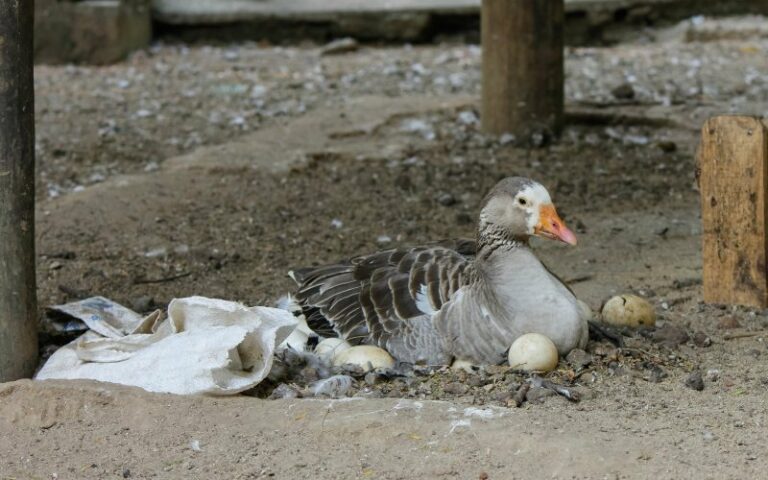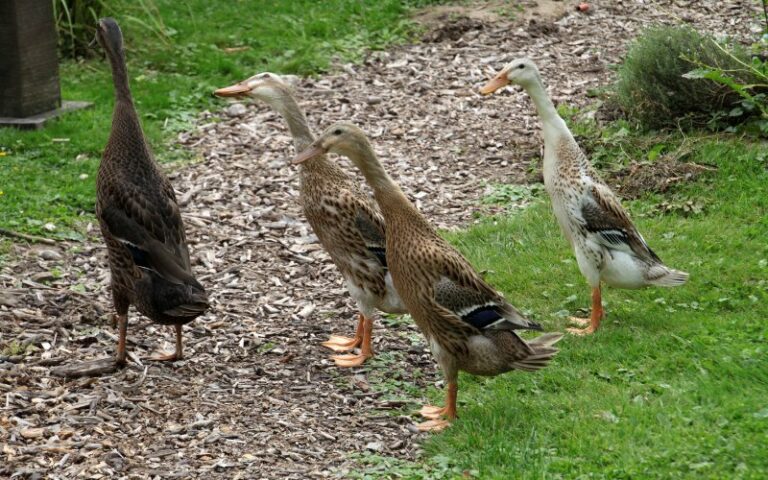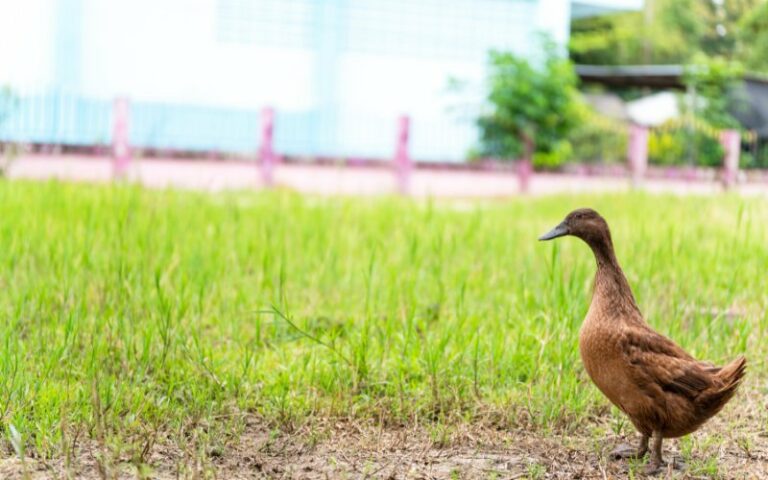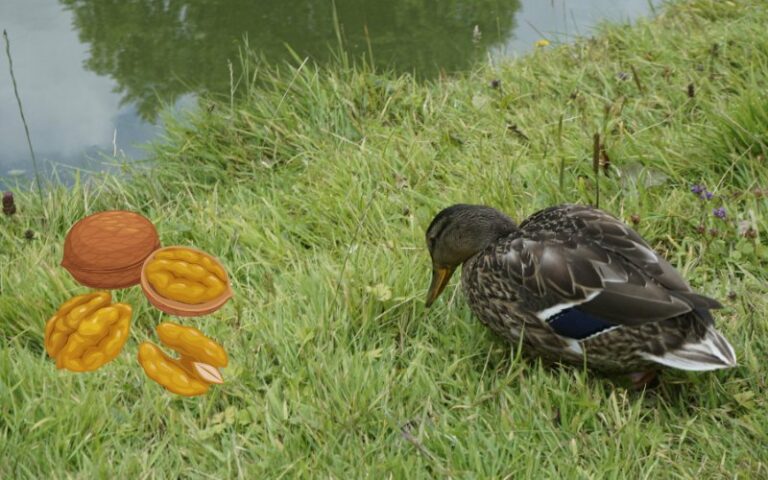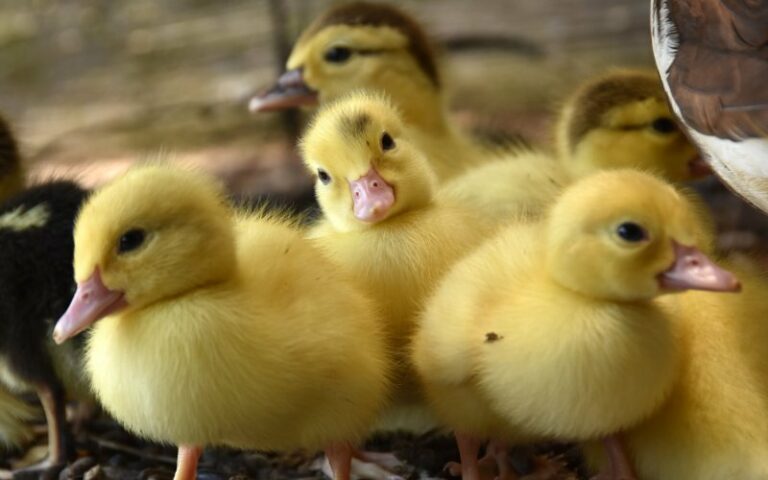Duck Breeds That Can’t Fly (6 Options)
While it’s true that ducks look gorgeous when in flight, sometimes that’s just not practical for a family farm, homestead, or backyard flock. Stick to simply admiring wild ducks flying by during migration season – because it’s a real pain when your flock decides it’s time to join them.
Not all ducks can fly, and some are better at it than others. Some breeds are content to hang out in or near their coop, even if you free-range and they’re able to go where they want. Other breeds will take every chance they have to escape, even if they’re provided with food, a duck pond, and plenty of company.
That’s all to say, the breed of your ducks has a major impact on whether or not they’ll try to escape, as well as how successful they’ll be at it. Whether you’ve had issues with escaping ducks in the past or you simply want to avoid unnecessary drama once your ducklings grow their wing feathers, it’s a good idea to research duck breeds. Here are good choices for ducks that don’t fly.
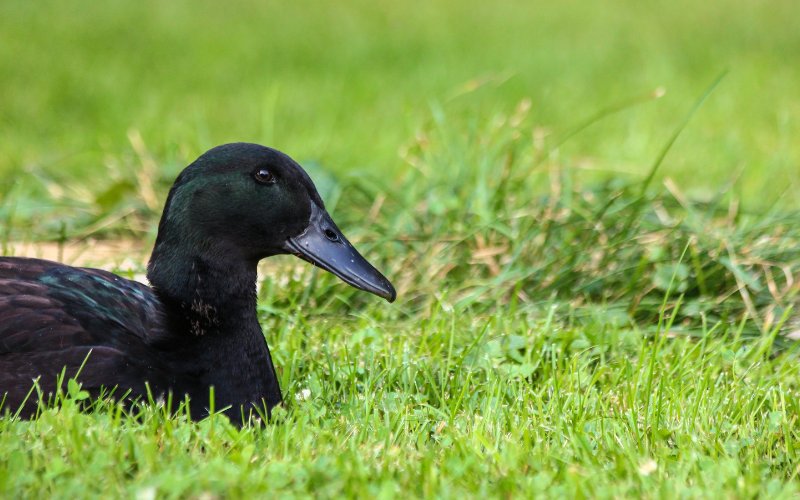
Which Breeds of Duck Can’t Fly? (The Short Answer)
Fortunately, most domesticated duck breeds can’t fly as flight isn’t necessary for them to survive, and it’s quite an inconvenient trait for duck owners. Additionally, ducks are typically bred for high meat and egg production which results in heavier ducks that can’t fly. My favorite flightless duck breeds are Cayuga, Pekin, Ancona, Rouen, Runner, and Orpington ducks.
Why Might You Be Looking for a Duck Breed That Can’t Fly?
Most domesticated ducks can’t fly – unlike wild ducks, they don’t have to find food, escape predators, or migrate. However, this isn’t the case for every single domesticated breed, so you may want to purchase a duck breed that can’t fly for one or more of the following reasons.
- You want to free-range or your duck enclosure doesn’t have a roof. There’s nothing keeping free-range ducks on your farm. If you free-range ducks that can fly and aren’t trained to return home, there’s a good chance that you’ll never see them again.
- Your fences aren’t particularly high. Some ducks, while they may not be able to truly fly, can jump fairly high and may be able to get over fences.
- If your ducks are exposed to real or perceived dangers, they’re more likely to try their wings. Many ducks actually can’t fly from birth, but learn how in order to escape danger, get food, or migrate. If there’s a chance that predators could frighten your ducks, they could have a greater motivation to learn how to fly. Purchase a duck breed that simply can’t fly and make sure that your flock has the protection it needs from outside dangers.
- You don’t want to bother with clipping wings. It’s possible to prevent flying ducks from taking off by clipping their wings, but this can be a big inconvenience. You’ll only have to do it once a year, but if you’re keeping a large flock for an extended period of time, it can become quite a nuisance.
- You’re looking for a friendly and unaggressive duck breed. Whether you want ducks that your kids will be comfortable around or you’re a little nervous about being around them, ducks that can’t fly tend to be calmer and friendlier, and the chances are small that they’ll be able to injure someone.
6 Duck Breeds That Can’t Fly
Potential duck owners usually look for ducks that can’t fly, so many breeds of ducks, whether they’re meant to be pets or for show, eggs, or meat production, can’t fly. Here are some of the best.
Cayuga Ducks
With a calm disposition, these ducks don’t seem to want to leave home even if they could. However, keep in mind that younger female ducks may be able to attempt flight; it’s unlikely that they’ll be able to fly well enough to escape, but don’t be surprised if you see young Cayugas trying their wings. When they’re full-grown, Cayugas tend to be about six to eight pounds which is too heavy for flight.
As a bonus, Cayuga ducks are one of the most beautiful duck breeds you can purchase. With an emerald-green sheen on their black feathers, they’re simply gorgeous birds. Farmers typically raise Cayugas for meat and eggs.
Pekin Ducks
Though Pekins have strong wings and hollow bones, both of which are necessary for flight, their weight simply makes flight impossible. At seven to nine pounds, adult Pekins struggle to get off the ground. Farmers all over the planet – including myself – raise Pekins for meat and eggs.
Pekins are also called American Pekins, Long Island ducks, and White Pekins. They are typically all white with a yellow beak and legs. Pekins seem content to waddle around, splash in puddles or a duck pond, and make noise. They’re friendly and a great addition to a backyard flock.
Ancona Ducks
At five to six pounds, Ancona ducks aren’t the heaviest domesticated duck breeds, and while adults are typically too heavy to take off, ducklings might be able to get off the ground for short periods of time. However, they aren’t good at it and won’t fly unless there’s an emergency.
Ancona ducks are raised for meat and eggs, but they also make great pets as they are very calm and happy birds. Some keep them as show birds as their plumage is a beautiful white that’s dappled with black, brown, blue, silver, or lavender.
Rouen Ducks
Developed in France for show and meat, Rouen ducks are quite versatile, though I wouldn’t recommend them for egg production. At six to eight pounds, they’re too heavy for flight and they’re often raised as backyard ducks.
These birds have gorgeous plumage in different shades of brown and gray bills and feet. They’re a beautiful addition to any farm or homestead – and you can trust them to not fly away.
Indian Runner Ducks
If you’ve ever seen an Indian Runner, you probably know that they can run incredibly fast. However, that speed doesn’t help much with flight, as Runner ducks have a unique and rather awkward posture that’s very upright. Runners can’t fly, but if you’re planning on free-ranging, keep in mind that their speed could be an issue. Indian Runners are quiet, but if something causes panic among them, they could jump a fence.
Indian Runners are small but mighty egg producers. You can find them in a wide variety of colors, though they’re typically white and brown.
Buff Orpington Ducks
At seven to eight pounds, Orpington ducks are simply too heavy to fly, though they possess an athletic build that’s great for meat production – and their meat is considered among the tastiest for duck breeds. They grow out quickly as well.
Orpington ducks are also good layers, making them an overall good choice for a backyard flock. They’re also calm and friendly. These birds tend to be buff-colored, though you’ll sometimes find white or blue Orpington ducks.

